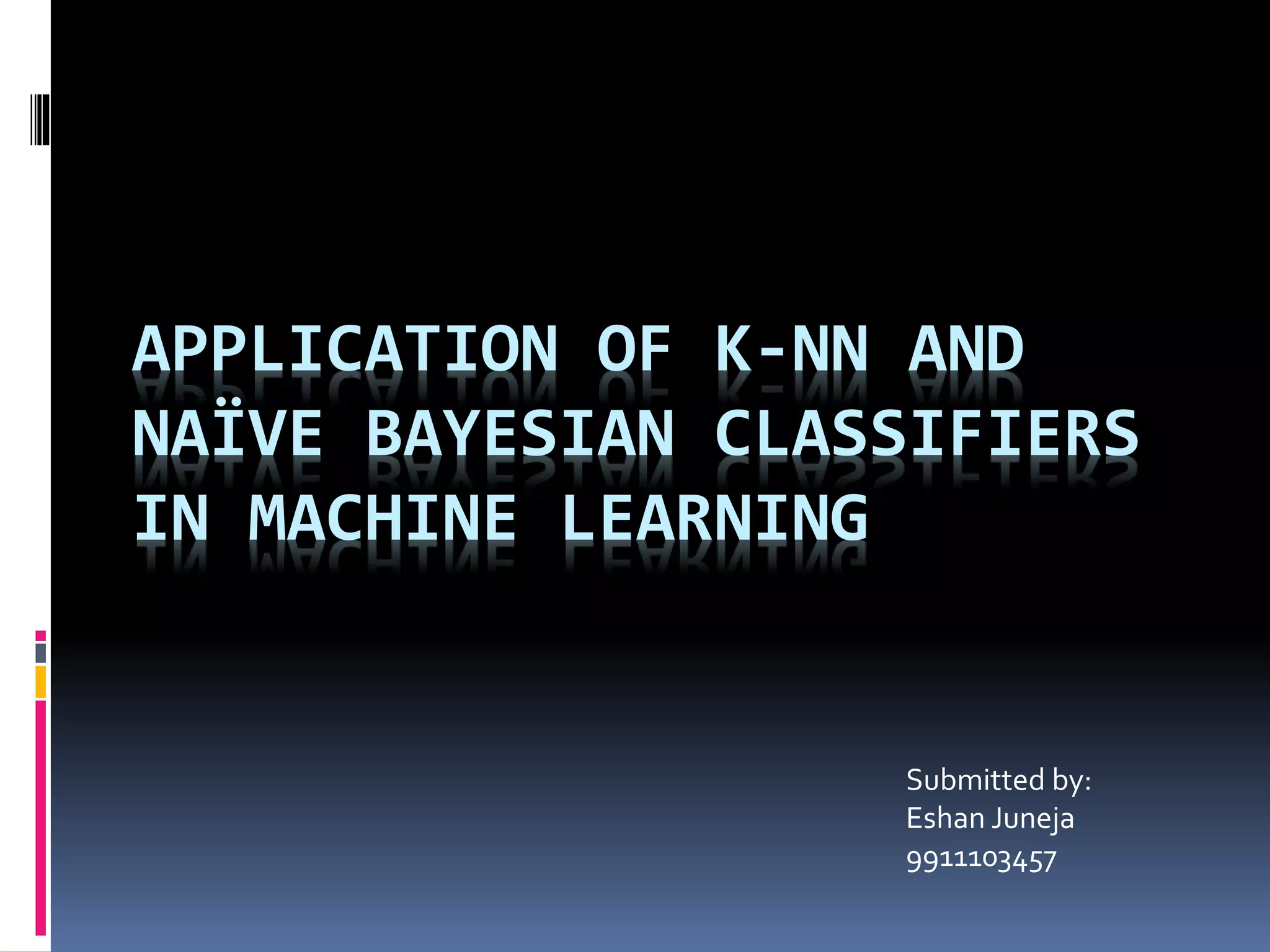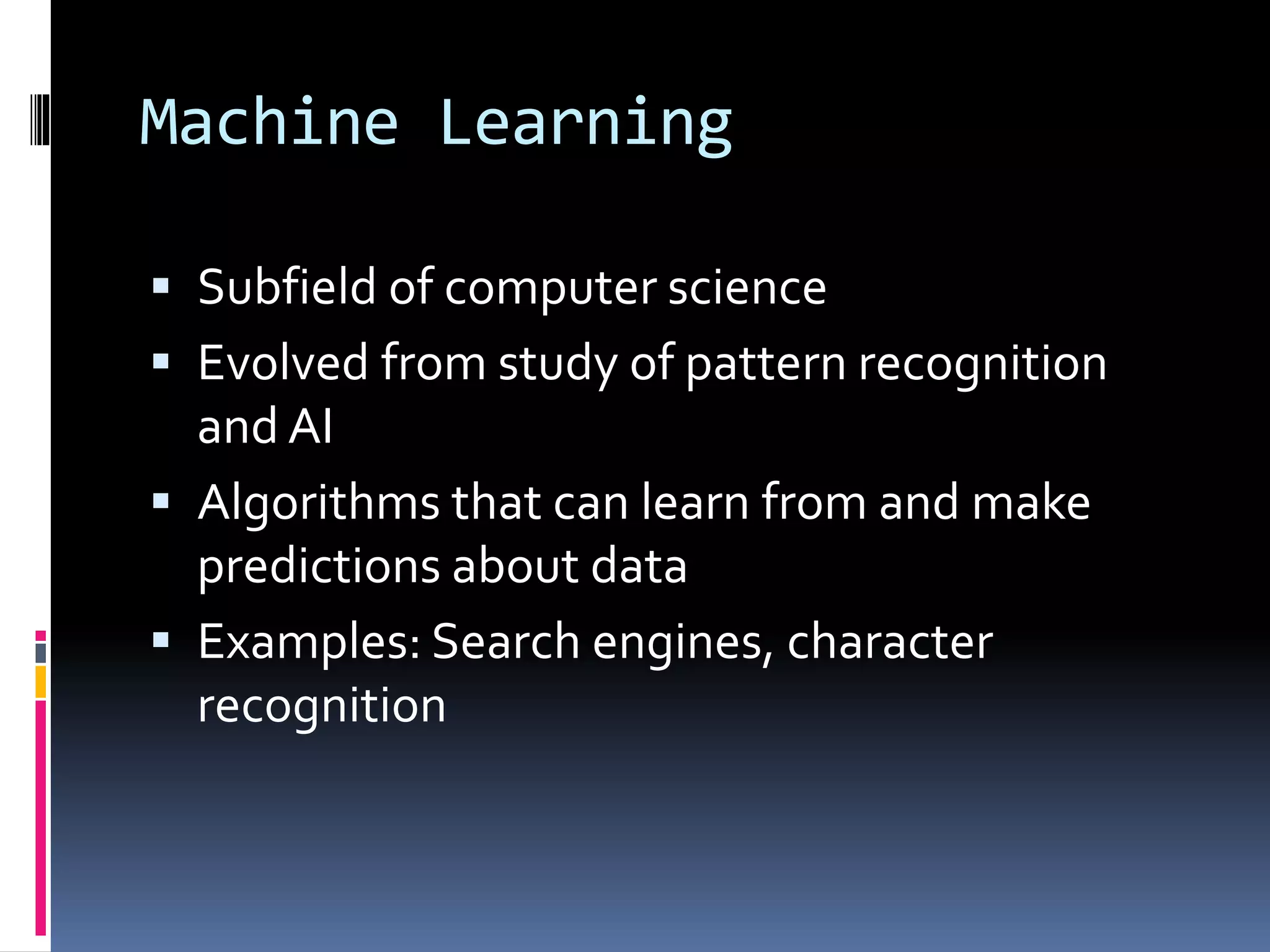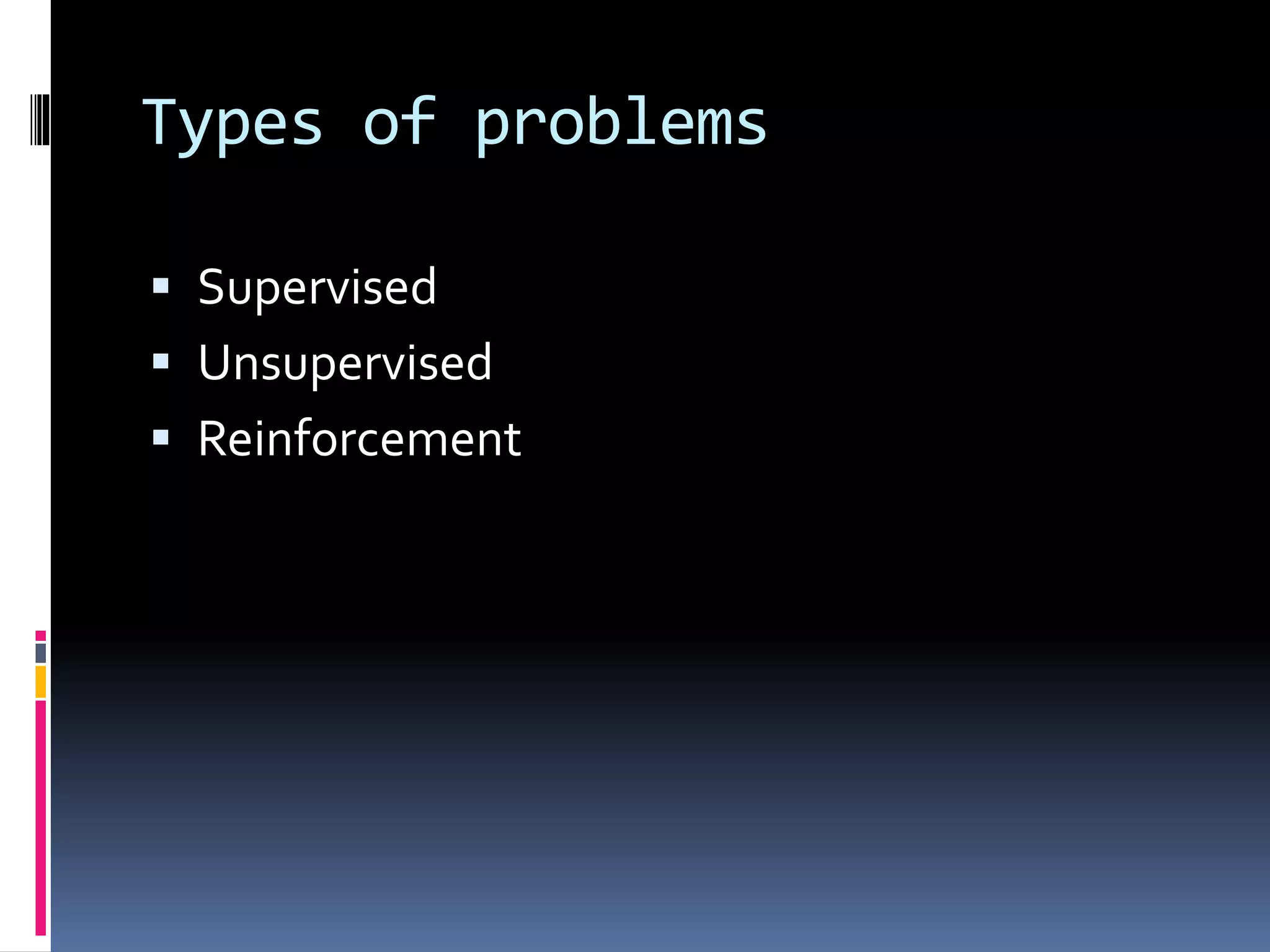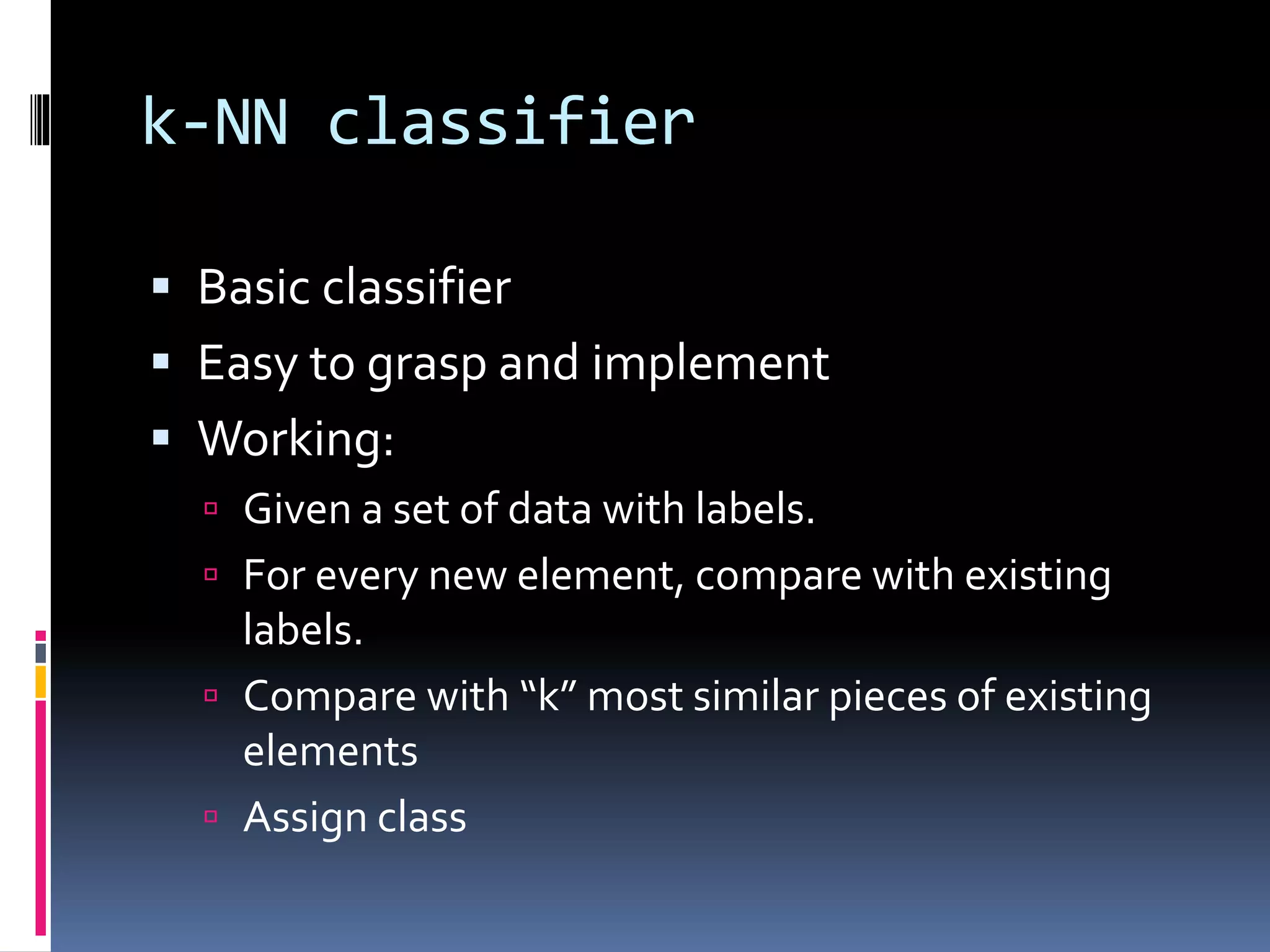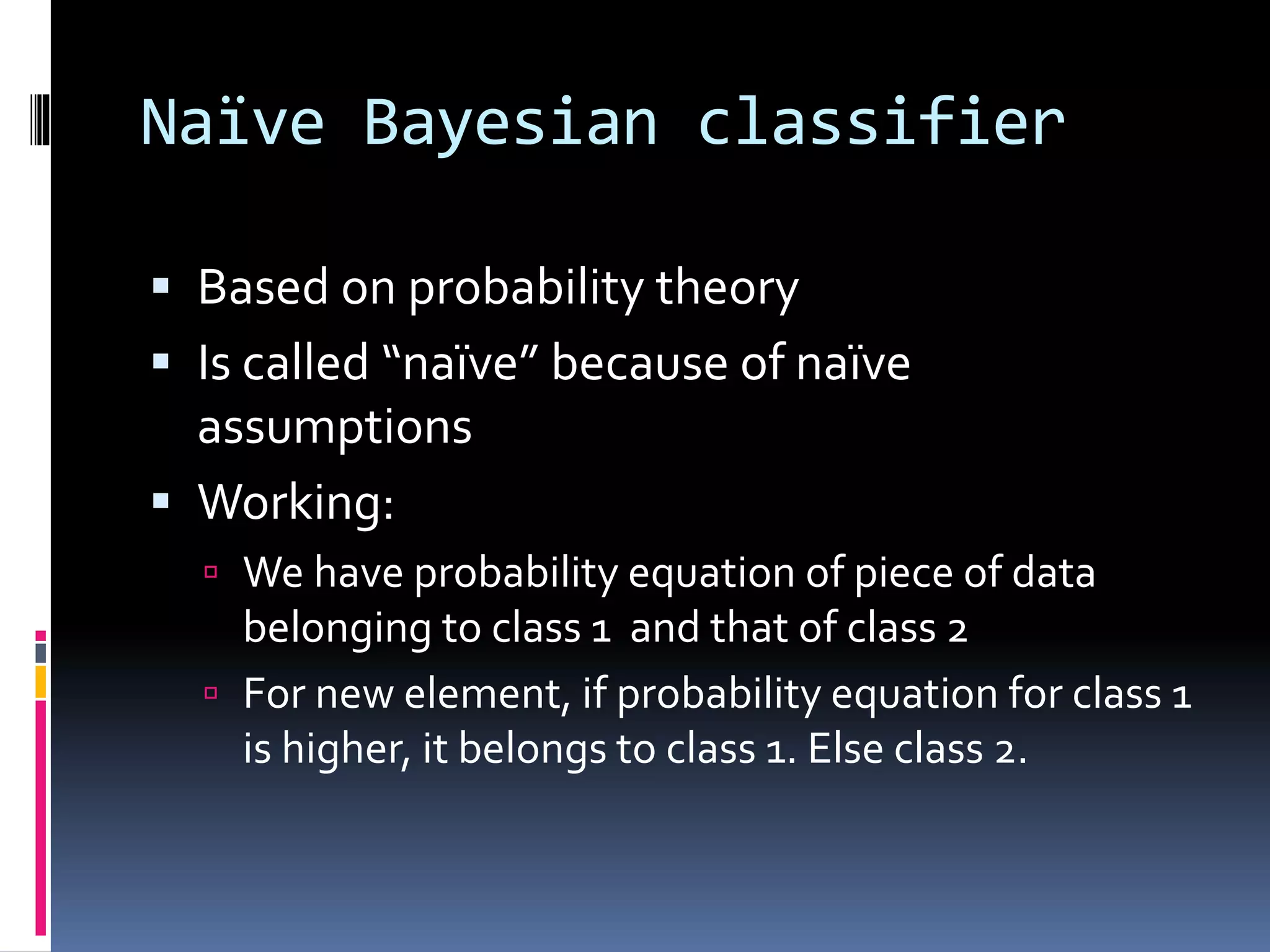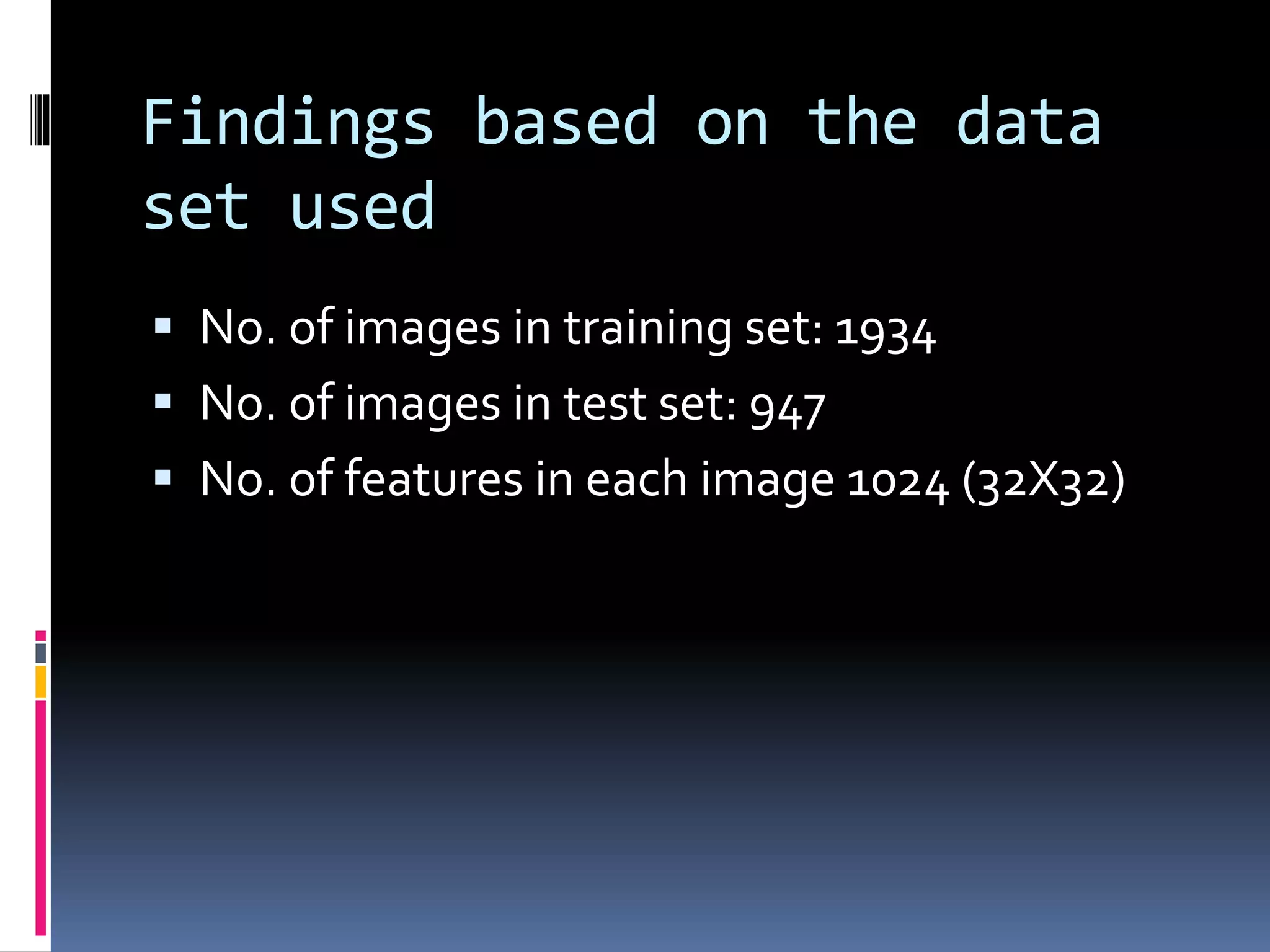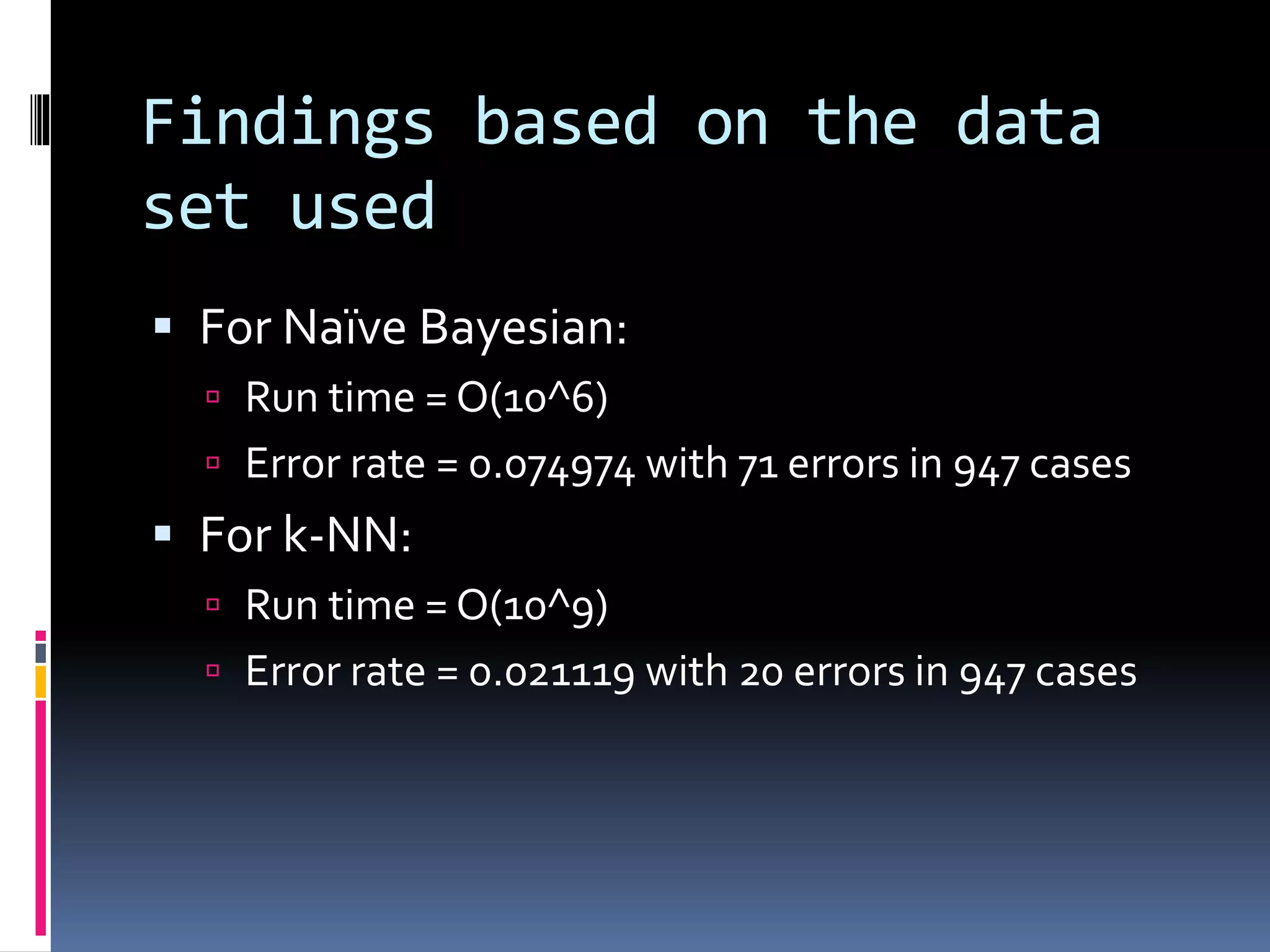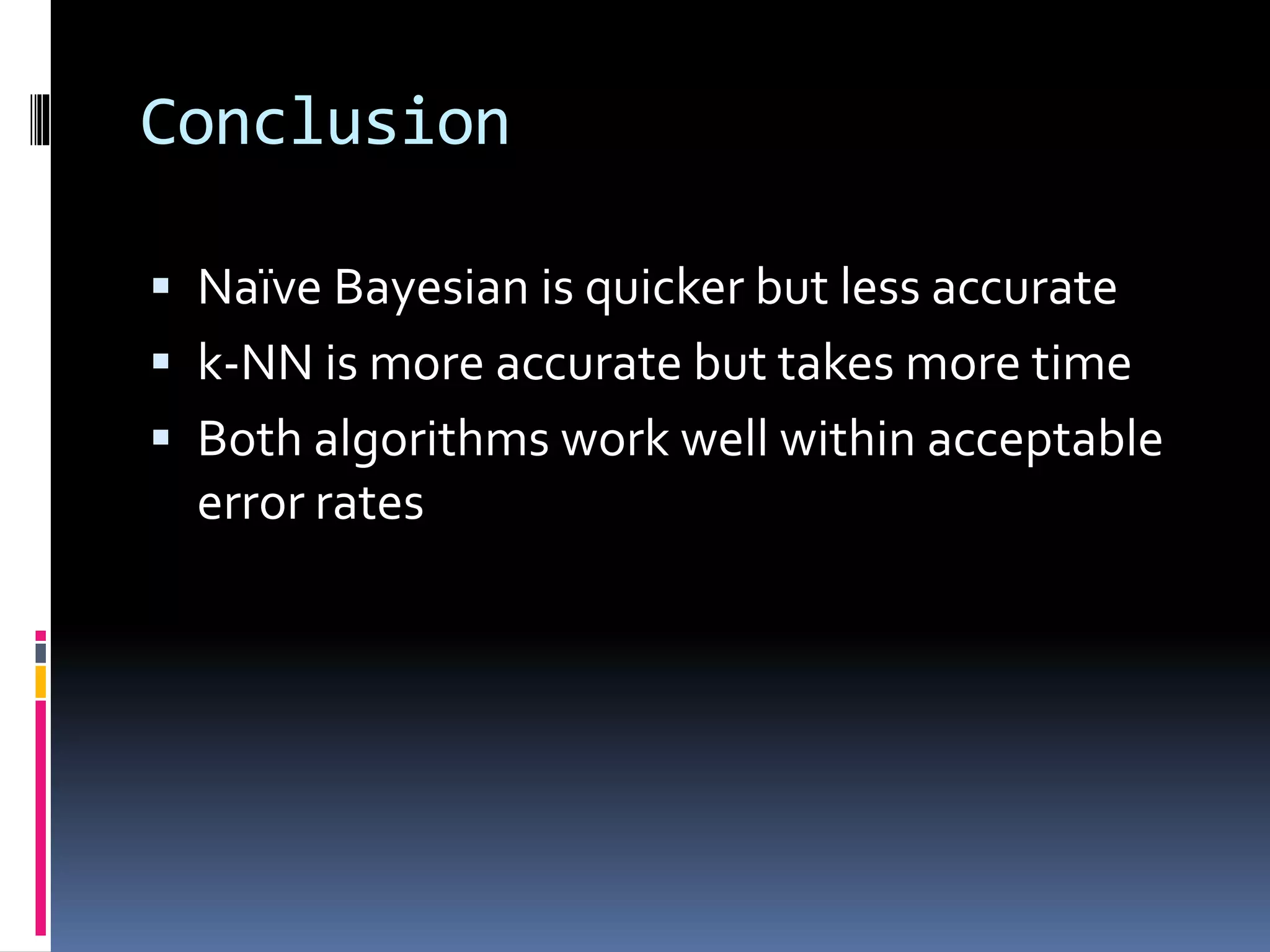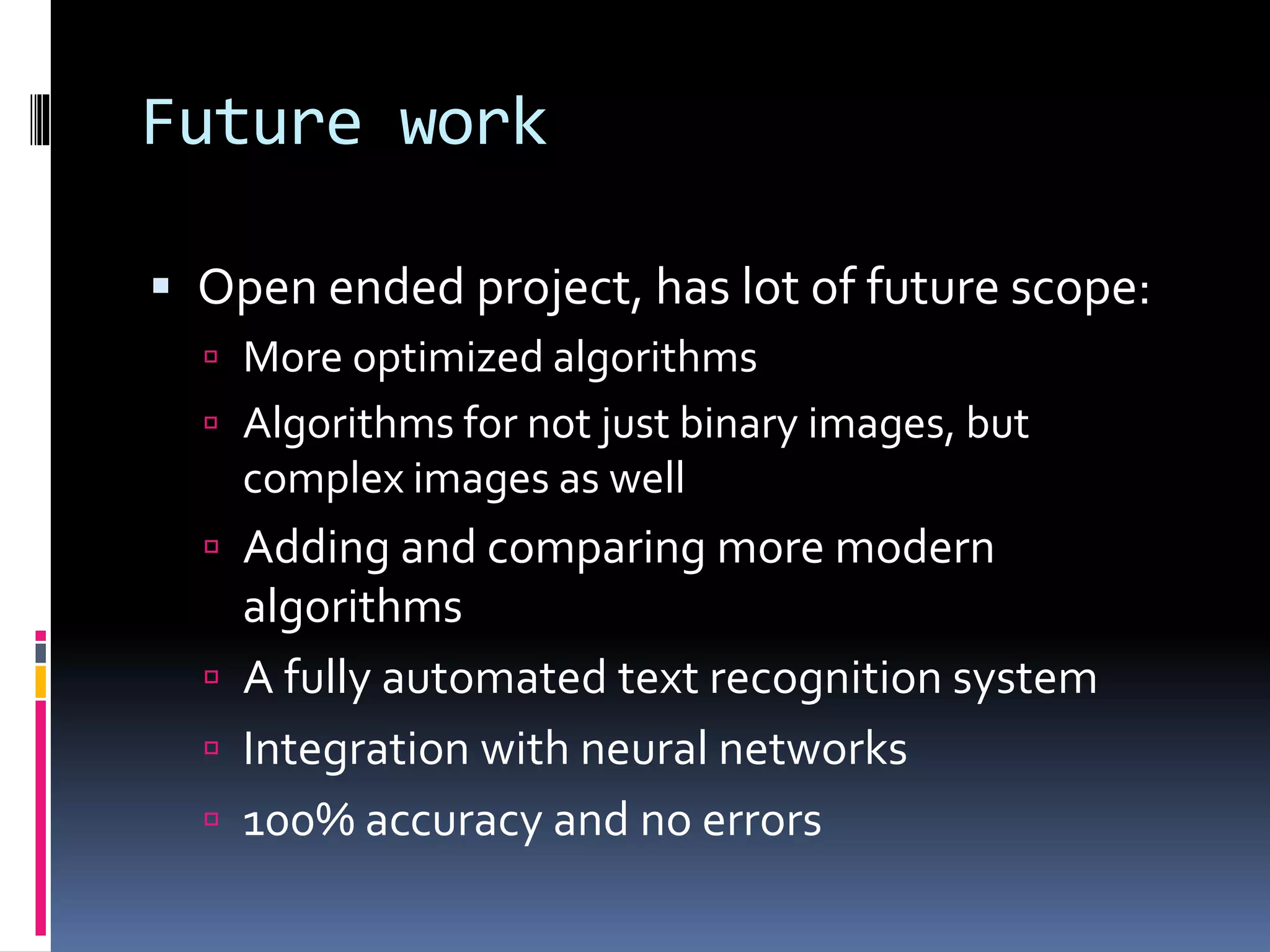The document discusses the application of k-nearest neighbors (k-NN) and Naïve Bayesian classifiers in machine learning, highlighting their working principles and performance on image datasets. The k-NN classifier is more accurate with an error rate of 0.021119, while the Naïve Bayesian classifier runs faster but has a higher error rate of 0.074974. Future work includes optimizing algorithms and exploring their application in more complex images and automated text recognition systems.
